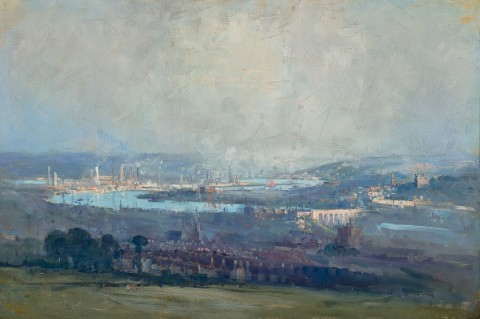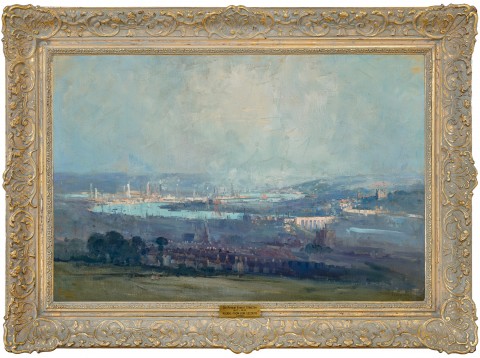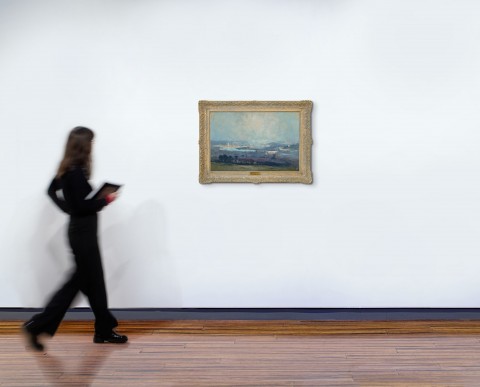ROUEN, FROM BON SECOURS, 1912
ARTHUR STREETON
oil on canvas
51.0 x 77.0 cm
signed lower right: A. Streeton
bears inscription on plaque attached to frame: Sir Arthur Streeton / “ROUEN, FROM BON SECOURS” / (c.1912)
Sir Edward Hayward, Adelaide, by 1968
Private collection, Melbourne
Sotheby's, Melbourne, 19 August 1996, lot 147
Henry Krongold, Melbourne
The Estate of Paul Krongold, Melbourne
Arthur Streeton Exhibition, John Martin & Co. Ltd, Adelaide Festival of Arts, Adelaide, 6 - 23 March 1968, cat. 79 (label attached verso)
Streeton, A., The Arthur Streeton Catalogue, Melbourne, 1935, cat. 482 or 483
Rouen, 1912, oil, illus. in Ure Smith, S., The Art of Arthur Streeton, Special Number of Art in Australia, Angus & Robertson, Melbourne, 1919, pl. XXXIX
Rouen, 1912, watercolour on paper, 23.5 x 34.5 cm, private collection
Arthur Streeton left Australia in January 1897, bound for London and eager to see the works of the great masters of European art, as well as those of his contemporary international peers. Writing to his friend Tom Roberts the following year, he declared, ‘[John Singer] Sargent is a perfect wonder … & 2 or 3 … are quite as fine as the great Rembrandt.’1 In a postscript to the letter, he wrote:
I feel convinced that my work hereafter will contain a larger idea & quality than before – After seeing Constable Turner Titian Watts & all the masters – I wish you & the Prof [Frederick McCubbin] could have a trip here – I think it’s necessary for ones work – I’m evolving & should I return I’d never paint Australia in exactly the same way – by Gad I’ll do one or two great things if I get out there again – I know more now - & would touch it more poetically.2
230229 p54 L_cmyk.jpg
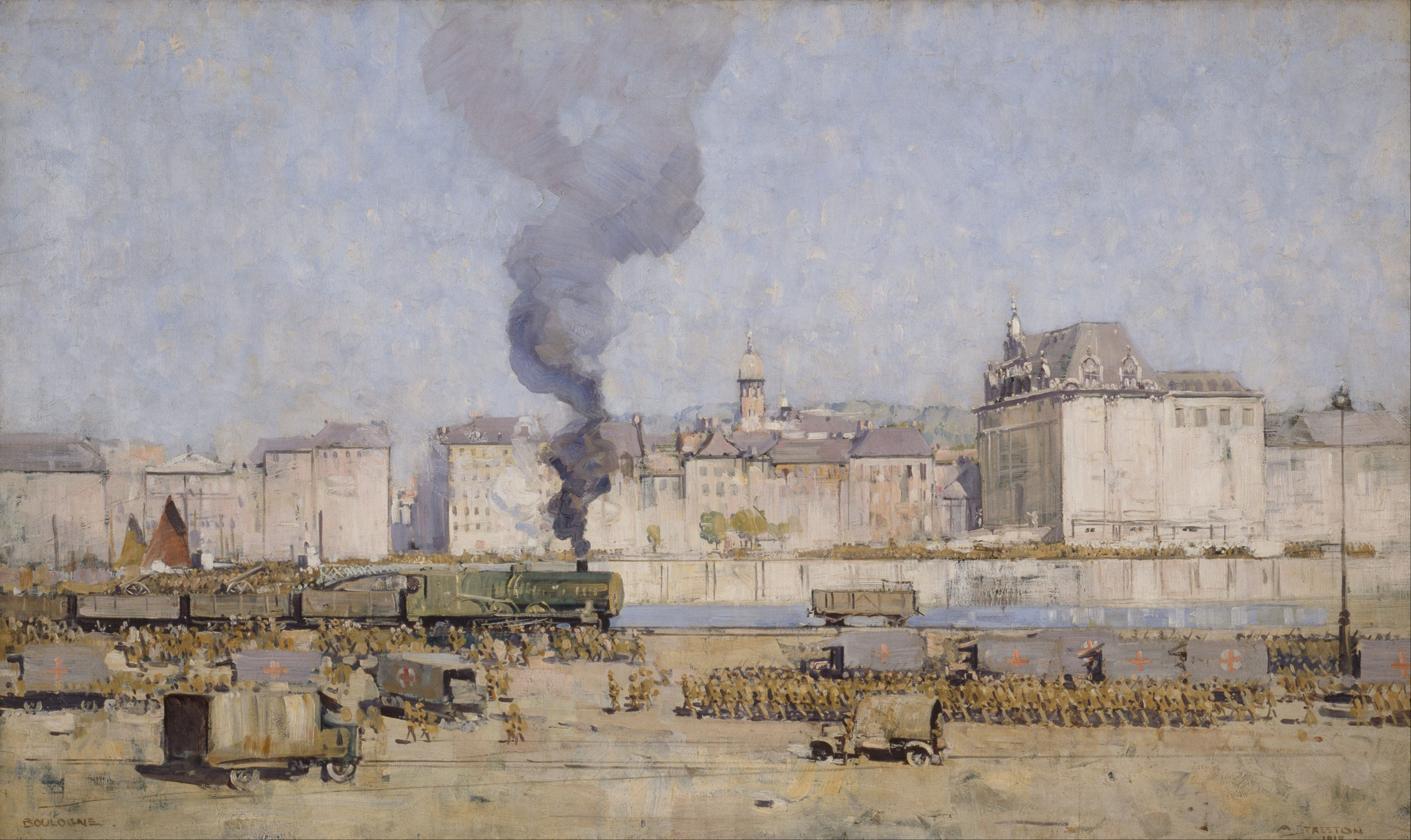
Apart from two extended visits to Australia, Streeton remained in England for more than twenty years, returning to the country of his birth in 1920 an established and successful artist. With his home base in London, Streeton had relatively easy access to Europe and his first visit to France, a week in Paris, took place in the summer of 1901. ‘I was over there for a week a little time back. The 1st impression never to be forgotten – & best of all the Louvre – the Giorgione, Titians, Poussins, Claudes, Tintoretto’s – ‘My Golly – how they sank down into me – how inspiring’.3 He visited France again, as well as Belgium, in May the following year, travelling with fellow artist Emanuel Phillips Fox.
This painting of Rouen, in Normandy in the north of France, emerged from more extensive travels through France in 1912 in the company of the English artist, collector and philanthropist, Sigismund Goetze. Writing to his friend Walter Pring, Streeton described the itinerary: ‘We’ve had pretty good weather for Amiens, Rouen (marvellous), Caen … Bayeux, Rennes, Vannes Mt St Michel, Qumper, & a dozen other places seen by motor, train etc – & still we go on, … We look forward to many places yet & later in Tours, & Chartres with its indescribable glass’.4 He also noted, ‘I met your friend Homo near where we stayed at Rouen, Hotel de la Poste, he was most kind and charming & helped direct me to the view of Rouen’.5
It is tempting to speculate that this perspective of Rouen, seen from the Gothic Revival Basilica Notre-Dame de Bon Secours outside the city, is ‘the view’ that Streeton refers to in his letter. Looking down a gently sloping, grassy hill, past rows of small houses towards the centre of Rouen, the painting adopts a broad view of its subject, taking in the pale blue river that meanders through the landscape, flanked by towering industrial chimney stacks and other buildings, all brought together under a vast open sky. Streeton was a skilled painter and his love of his medium and facility with the brush is on full display in this work. Broad, lively brushstrokes impart a sense of dynamism and movement within the depiction of the overcast sky, while quick daubs of paint describe yachts and other vessels on the river, as well as the smoke that emanates from the chimney stacks.
230229 STREETON REPLACEMENT FOR p. 55 .jpg
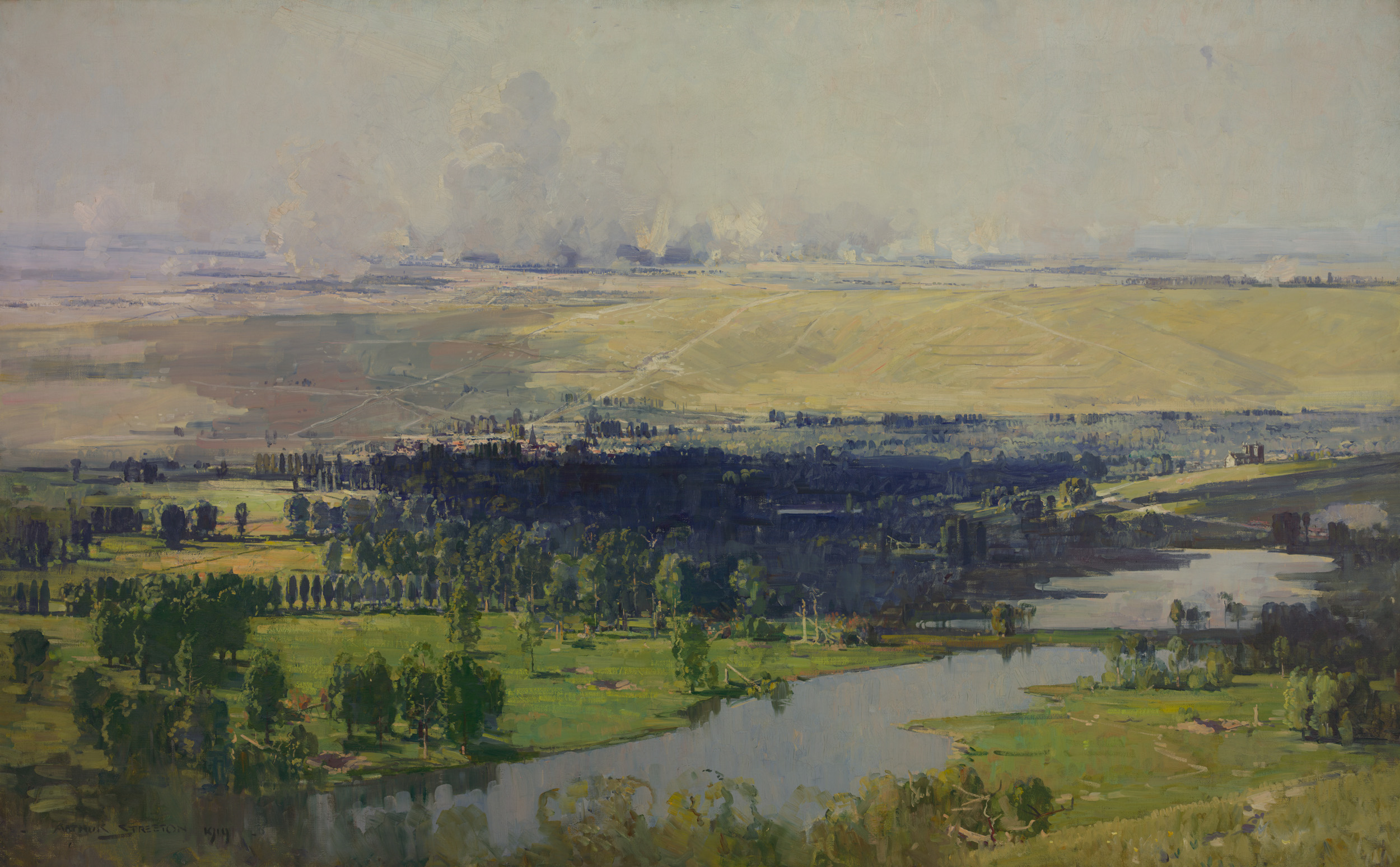
While the subject matter and colour palette are very different from Streeton’s iconic ‘blue and gold’ depictions of the Australian landscape, the composition shares many of the characteristics of well-known paintings such as ‘Still glides the stream, and shall for ever glide’, 1890 (Art Gallery of New South Wales) and Australia Felix, 1907 (Art Gallery of South Australia). This predilection for a panoramic view is perhaps the reason that he chose not to focus on a more obvious landmark, the Rouen Cathedral, that was made famous by Claude Monet in his early 1890s series of more than thirty paintings of its façade which captured the changing colour and light at different times of day and year.
Streeton’s best-known paintings of France were made some years later when he was appointed an Australian official war artist and attached to the 2nd Division of the Australian Imperial Force, undertaking two tours in 1918. Producing many more works than his commission required – watercolours and drawings made in the field, and paintings produced in the studio – Streeton was inspired by both his subject and his fellow-soldiers: ‘Australians, I thought I understood … but its necessary to see & know them here to properly appreciate the manhood of Australia – Absolutely – The fights against fire & flood & thirst in the Bush, all tells in the field here – & brings out the finest in them … I’m glad I’ve not missed it.’6
1. Streeton to Tom Roberts, 28 June 1898 quoted in Galbally, A. and Gray, A. (eds.), Letters from Smike: The Letters of Arthur Streeton 1890-1943, Oxford University Press, Melbourne, 1989, p. 77. Streeton’s spelling and punctuation was idiosyncratic and is quoted here exactly as it has been transcribed and published.
2. ibid., p. 78
3. Streeton to Tom Roberts, 1 October 1901, ibid., p. 88
4. Streeton to Walter Pring, 15 September 1912, ibid., p. 123
5. ibid.
6. Streeton to Tom Roberts, 6 July 1918, ibid., p. 148. For more information about Streeton’s work as an official war artist, see Yip, A., ‘Painting the Somme’ in Tunnicliffe, W., Streeton, Art Gallery of New South Wales, Sydney, 2020, pp. 234-242.
KIRSTY GRANT
